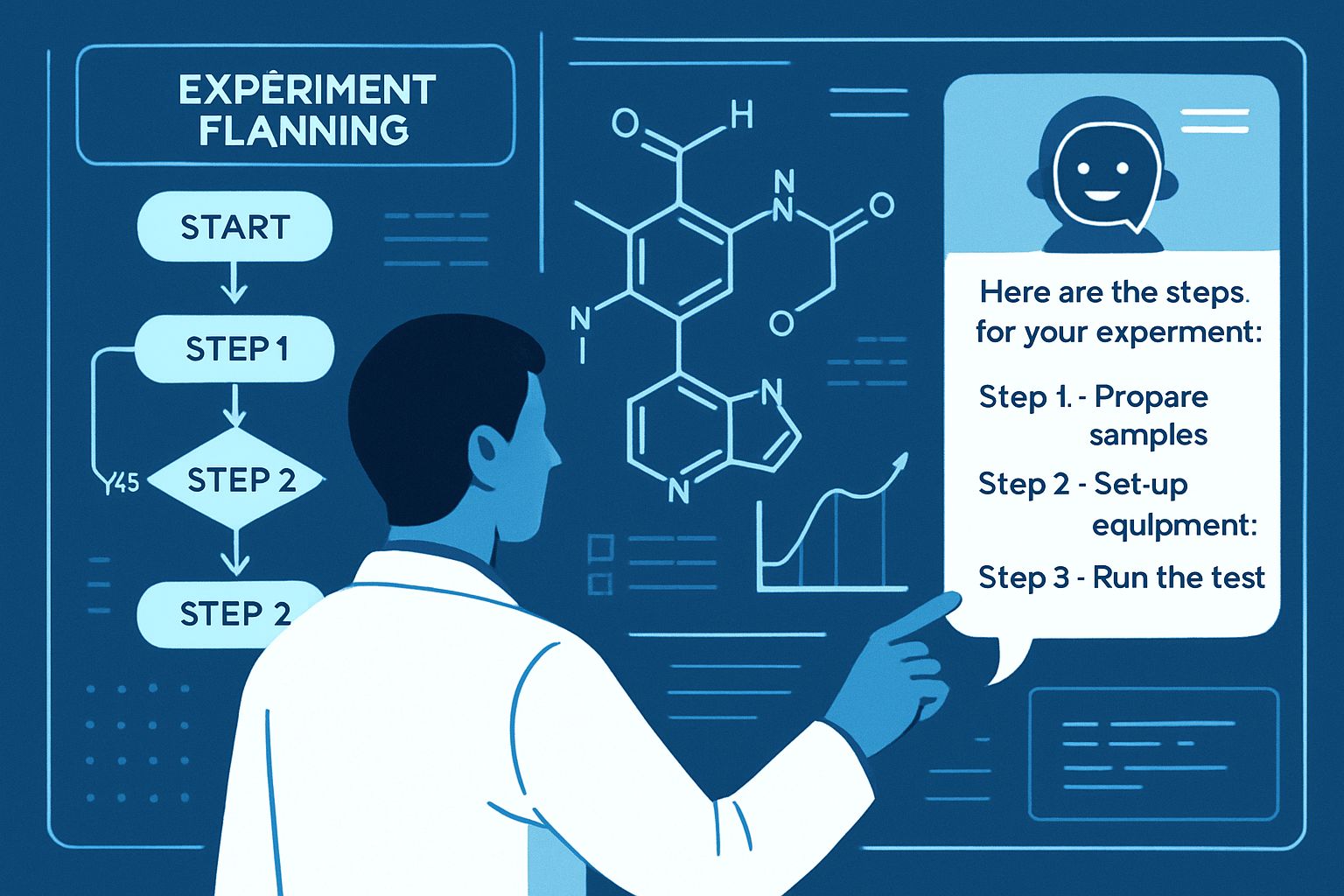
AI CERTS
13 hours ago
Research AI assistants reshape scientific discovery
Furthermore, secondary evidence from surveys and market analysts reveals surging adoption across biology, chemistry, and materials science. Readers will gain a balanced view of capabilities, limitations, and next-step skills to navigate this pivot. Throughout, we reference live demos and peer-reviewed data rather than hype. With that context established, we examine how Research AI assistants now reach operational maturity.
Research AI Assistants Mature
Google and DeepMind unveiled an "AI co-scientist" in February 2025 after a year-long internal trial. Moreover, the academic Robin system automated literature search, hypothesis crafting, and candidate validation for macular degeneration. Meanwhile, BioNTech’s Laila demo integrated agents with lab devices, underscoring momentum beyond slideware.

These milestones indicate that Research AI assistants are graduating from conference posters to controlled researcher pilots. Consequently, industry observers note a shift from isolated point solutions toward end-to-end agentic pipelines. Nevertheless, leaders still label the technology augmentative, stressing that human scientists remain central. Early pilots prove speed gains yet expose open validation gaps. Therefore, a deeper understanding of the underlying stack becomes essential. We next explore those technical foundations.
Core Technical Stack Foundations
Every assistant relies on retrieval-augmented generation, or RAG, to ground responses in papers. In contrast, vanilla language models often hallucinate evidence without such retrieval. Furthermore, multi-agent orchestration assigns specialized roles for search, analysis, and critique inside complex scientific workflows.
One agent gathers PDFs for literature synthesis, another ranks findings, while a planner designs experiments. Subsequently, an evaluation agent checks reproducibility using prior datasets or simulations. Google's system chained seven such agents, whereas Robin used five plus human review gates.
Research AI assistants connect these modules through orchestration frameworks like LangChain or custom message buses. Consequently, updating a single component improves end-to-end performance without retraining the entire model. Technical stacks center on RAG, agents, and evaluators. However, performance matters little without market traction. The next section quantifies adoption trends.
Market Momentum By Numbers
Precedence Research pegs AI in drug discovery revenue at $6.9 billion for 2025. Moreover, several analysts project double-digit compound growth through 2034, potentially surpassing $16 billion. Although methodologies differ, consensus signals expanding budgets for intelligent lab tools.
Nature surveys show roughly one-third of scientists already experiment with generative models for drafting or literature synthesis. Additionally, vendor telemetry from Elicit logs weekly user totals exceeding 100,000. Consequently, investors funnel capital into startups building automation layers around experimental labs.
- 2025 market estimate: $6.9 billion
- Projected 2034 market: $16-20 billion
- Surveyed researchers using generative AI: ≈30%
- Elicit weekly active users: 100k+
Numbers illustrate accelerating confidence and cash. Therefore, understanding concrete benefits clarifies why spending rises. We now examine those benefits.
Benefits Drive Adoption Broadly
Speed tops the list. Google reported that literature synthesis compressed from weeks to minutes during biomedical trials. Moreover, Robin reduced experiment planning cycles by 70% in its preprint case study. Consequently, organizations piloting Research AI assistants report noticeable productivity jumps.
LLMs also surface cross-disciplinary links, suggesting non-obvious drug repurposing angles. Additionally, automation of mundane data extraction frees researchers for creative hypothesis shaping. Democratization follows, since small labs can access curated insights previously reserved for pharma giants.
- Faster literature synthesis and curation
- Data-driven experiment planning templates
- Continuous reproducibility checks via agents
- Lower barriers for interdisciplinary teams
Collectively, these gains create persuasive business cases. Nevertheless, unresolved risks could stall progress. The next section tackles those risks.
Risks Require Strong Oversight
Hallucinated citations remain a persistent headache when retrieval fails or sources lag. In contrast, manual verification still consumes valuable researcher hours. Bias amplification also threatens diversity of hypotheses, reinforcing publication monocultures.
Furthermore, reproducibility suffers if models suggest poorly controlled experiments or omit statistical power estimates. Subsequently, mistaken downstream lab work wastes reagents and credibility. Ethicists warn about unclear authorship, data privacy, and liability when algorithms orchestrate wet-lab automation.
Research AI assistants therefore, demands transparent logs, versioning, and independent audits. Several European policy drafts propose mandatory provenance metadata for scientific workflows using generative models. Consequently, governance frameworks must evolve quickly. Verification, bias mitigation, and accountability define the oversight agenda. Therefore, skills and governance training gain urgency. We now discuss required competencies.
Governance And Skills Pathways
Institutions increasingly offer targeted courses on AI ethics, RAG engineering, and validation statistics. Moreover, professionals can enhance expertise with the AI Researcher™ certification. That program covers literature synthesis audits, experiment planning, safety, and reproducibility checkpoints.
Additionally, vendors have launched sandbox environments where scientists practice constructing trustworthy scientific workflows. Subsequently, audit logs allow peers to replicate results line by line. Mentorship networks complement formal courses, pairing bench researchers with agent orchestration engineers.
Upskilling ensures humans remain critical reviewers. Consequently, regulated competence supports wider deployment of Research AI assistants. Next, we evaluate likely near-term trajectories.
Realistic Outlook For 2025
Short-term, more prototypes will integrate directly with automated liquid handlers or microscopy rigs. However, commercial general-purpose agents will probably remain gated behind enterprise contracts. Meanwhile, benchmark initiatives aim to score literature synthesis quality and experiment planning rigor.
Market consolidation appears likely as infrastructure giants acquire specialist startups to secure automation talent. Moreover, regulators will release draft reproducibility guidance, forcing transparent documentation of scientific workflows. Consequently, organizations deploying Research AI assistants must prepare for compliance audits.
Growth, consolidation, and regulation will define 2025. Therefore, strategic planning now prevents future surprises. We close with action recommendations.
Research acceleration no longer sits on the horizon; it operates in early adopter labs today. However, safe and effective scale demands disciplined engineering and governance. This article showed how RAG, agents, and orchestration support rapid reviews, robust experiment planning, and continuous reproducibility. Moreover, market data and pilot outcomes suggest the investment thesis remains strong despite unresolved risks. Consequently, leaders should upskill teams and secure certifications like the AI Researcher™ credential. By pairing governance frameworks with capable Research AI assistants, organizations will innovate faster and more responsibly. Explore the certification pathway today and prepare your lab for the next discovery wave.



